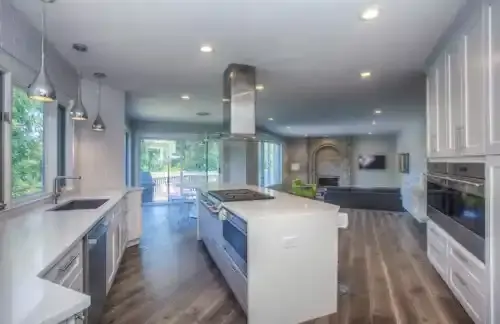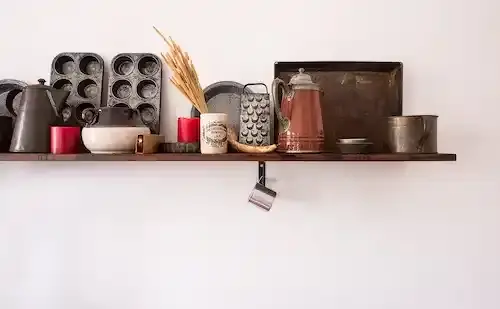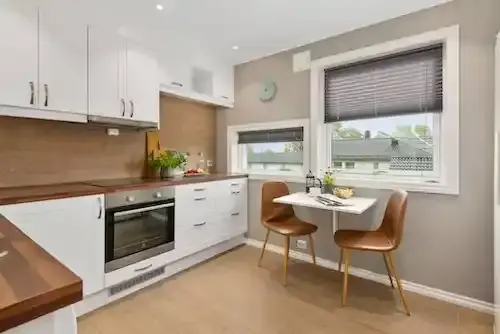How to organize kitchen cabinets to prepare faster and easier meals
If you consider kitchen organization your enemy, you are not alone. Admittedly, disinfecting, adjusting, and cleaning your kitchen can take time. But trust us: the benefits far outweigh the worry and inconvenience.
Show key points
- Organizing your kitchen may take time, but the benefits of efficiency, cleanliness, and mental clarity make it well worth the effort.
- Taking everything out of your cabinets first helps you evaluate and categorize your kitchen items more effectively.
- Regularly decluttering by keeping only what you use, and donating or discarding the rest, keeps your kitchen functional and clutter-free.
- ADVERTISEMENT
- Grouping similar items into categories before putting them back makes it easier to find the best storage solutions.
- Planning your cabinet organization around how and where you perform tasks in the kitchen maximizes usability and convenience.
- Utilize all available space, including cabinet doors and unused walls, for creative and accessible storage options.
- Before returning items to their places, thoroughly clean both the storage areas and the items themselves to ensure a fresh start.
Learn how to organize kitchen cabinets, and incorporating storage ideas can lead to faster and easier meal preparation, as well as making cleaning easier and more streamlined.
Not only will you save time, but you can also save money by using foods and cleaning products before they expire. In addition, an organized kitchen is not only visually appealing but also beneficial for your mental health.
Are you ready to learn how to organize kitchen cabinets? Set aside the afternoon, then plan to reward yourself with your favorite drink in a sparkling glass glass.
Recommend
1. Remove everything

The first step to organizing kitchen cabinets seems a bit counterintuitive, as it involves creating chaos in the kitchen. But we promise that it will come with a big reward. Once everything is removed, it will be easier to decide what to keep and what to reallocate.
Start by emptying your cabinets and drawers completely. While this will create some visual distraction, it will also allow you to evaluate your items faster. It is somewhat easier to apply this to small kitchens at once because they have fewer things. For larger kitchens, you may want to break into one or more areas at a time, which can be divided into upper and lower cabinets, areas for storing food or supplies, and areas for storing general cleaning materials.
2. Regular disassembly and stacking

Think over each item in order to determine its value in the kitchen and in your life. You don't have to turn into a whole Marie Condo and determine if something will blow up happiness, but you have to be honest about using it in the future.
Detach kitchen items and place each in one of three piles – one to hold, one to donate, and the last to throw – and name the boxes on the go. Be cruel! Broken items that have been behind doors and for years should be discarded. Simply repeat for any unused items. Let history guide your choices.
From there, you actually need to get rid of things you don't want to keep; don't let those piles pile up in the corners, which can cause more chaos. Try to donate, sell or dispose of them as soon as possible.
Some communities sponsor so-called "sidewalk shopping," where product pickers are allowed to take unwanted items off the roadsides. Online marketplaces connect buyers and sellers or those looking to find a new home in order to collect some items for free or for a small price. Or find a local charity and donate to it.
3. Organization

Split the "Keep" pile by category. You won't be storing everything yet, you'll simply assemble similar items, making it easier to discover ideal storage solutions.
First, collect supplies and food in one area. Then deal with everything else: plate set, glassware, pots and pans, bakeware, food storage boxes, food preparation utensils, utensils, linens – you name it. By the time you finish this third step, you must have gotten classified piles of kitchen utensils.
4. Make a plan

Knowing how to organize kitchen cabinets becomes much easier when you consider kitchen areas. Where to cook? Where to eat? Where to store food? Tools, pots, pans and cutting boards must be located in the working area.
It is best if the "pantry" – or food cabinets – is adjacent to the food preparation area. If this space is too small to accommodate everything, keep frequently used items (such as pasta, oil, cereals) nearby and set up another storage space on the shelves.
This is a favorable opportunity to study what your kitchen is missing in terms of storage space. This can be a leftover container, a place for mats, or a way to facilitate morning traffic. At this point, make a plan for the attack. No matter how tempting it may be, don't start stuffing items in your cabinets yet! Instead, evaluate your kitchen goods.
5. Evaluate your space and space

Find the available space inside the cabinet doors and along the walls. Hang baskets on the inside of the door in order to create a charming warehouse of linens, for example. Or try this spice storage idea: mount the spice rack on the inside of the door or on the wall to free up shelf space while keeping frequently used items on hand.
And of course, think beyond your lockers when thinking about free space. Wooden shelves on an unused wall can host cups and cups. Space permitting, a small island with rolling wheels may help absorb the surplus.
6. Space diagram

It's time to put stickers on different places and spaces in your kitchen. This can be temporary, but it helps create an index card for each cabinet and drawer. Make sure there is room for everything before putting items inside.
Believe it or not, this will save time, it is not work that consumes a lot of time and provokes frustration, but rework.
7. Cleaning

Before returning anything, take extra time to clean up the items in your kitchen. (Or go further and clean your entire kitchen.) The items you keep may need to be thoroughly washed if stored for a while, so don't lose sight of the shelves, drawers and cabinets themselves. Open shelves attract a staggering amount of dirt, and even door-protected interiors accumulate dirt.








